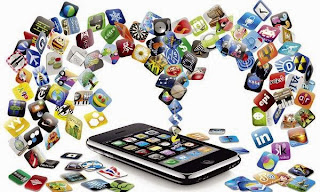For this post that we were assigned, Dr. Strange gave us this data from Zogby Analytics to use.
1. 87% say their smartphone never leaves their side.
2. 80% say the very first thing they do in the morning is reach for their smartphone.
3. 78% say they spend 2 or more hours per day using their smartphone.
4. 68% say they would prefer to use their smartphone instead of their laptop or personal computer for personal use.
5. 91% say that having a camera on their smartphone is important (61% very important)
6. 87% say they use their smartphone camera at least weekly. 59% use their smartphone camera at least every other day. 44% use their smartphone camera for still or motion picture taking every day.
In addition, Dr. Strange gave us this information as well:
"Cameras were added to smartphones starting in 2002. The first iPhone also had a camera. It became available in June 2007. Seven years later there are over 1.75 billion smartphones worldwide. (Source: emarketing) This means that 24.1% of the entire world population (7.263 billion as of 3:32 CDT 9/27/2014 - Source: World Population Clock) now has a smartphone. Your students will have lived all their life in a world with smartphones containing cameras."
From this data, I can conclude that people are pretty attached to their smartphones, if they have them. These devices are used to use social media, text, call, play games on, take pictures and videos on, and much more. This data also shows that pretty much all smartphones have cameras. I think this because I don't think that many people have smartphones from before 2002.
Technology is a huge part of the world that we live in. This means that technology has to flow into the classroom, and it has. Most classes in the area that I live in use computers/tablets in their classes. Smartphones could be implemented into classrooms, but a little more creatively. This would be more difficult to do with an elementary class setting, but tablets could be used instead. In a high school or middle school setting, this would be more feasible. Pretty much all of the parents of these children have smartphones these days. This can be used as a quick and easy communication tool between the parent and the teacher. Also, having a Twitter feed that the parents can subscribe to so they know what the plan is for the week ahead.
There are many ways that a smartphone or a tablet can be used so that it helps cover the requirements for Alabama College and Career Ready Standards. One way I could incorporate one into the classroom is having the students use to use it to record a choreographed routine for the dance requirement. It could also be incorporated by creating a station where students record themselves reading so they can go back and hear their errors and correct them, just as in iPad Reading Center. The students can also take pictures of different plants and leaves for science to compare and contrast the different plants. This also helps create a diversity in plants throughout the class.

No comments:
Post a Comment